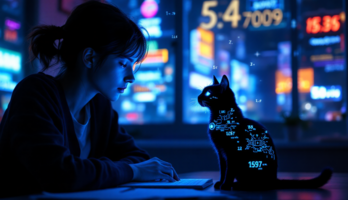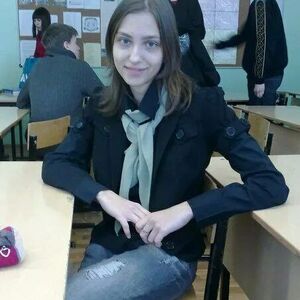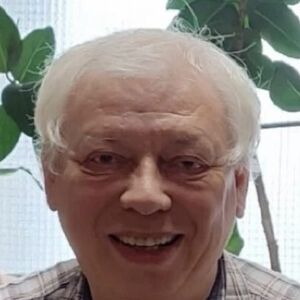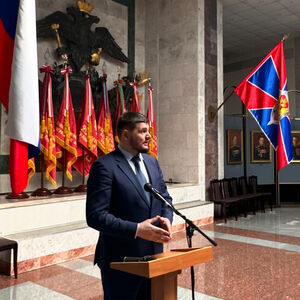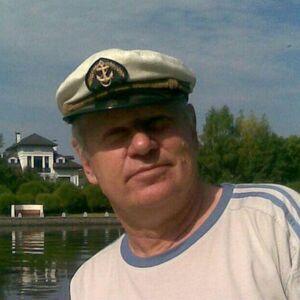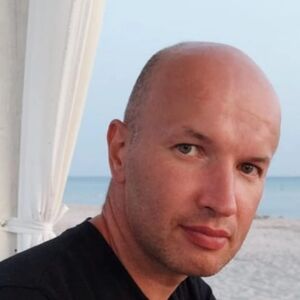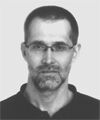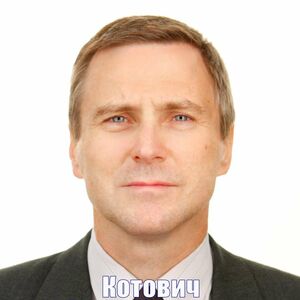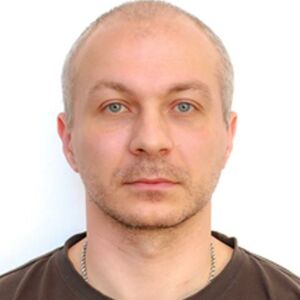Диссертация (1335891), страница 27
Текст из файла (страница 27)
Monaco, I. Ciarrocchi, F. Sgolastra, R.Cattaneo // J. Electromyogr. Kinesiol. – 2017. – Vol. 22, № 3. – P. 463-468.214. Mongini, F. Habitual mastication in dysfunction: a computer-based analysis / F.Mongini, G. Tepia-Valenta, E. Conserva // J. Prosthet. Dent. – 1989. – Vol. 61, №4. – P. 484-494.167215. Moss, J.P. An electromyographic investigation of patients with a normal jawrelationship and a class III jaw relationship / J.P. Moss, C.F. Chalmers // Am.
J.Orthod. – 1974. – Vol. 66, № 5. – P. 538-556.216. Moss, M.L. The functional matrix hypothesis revisited. 1. The role ofmechanotransduction / M.L. Moss // Am. J. Orthod. Dentofacial. Orthop. – 1997. –Vol. 112, № 1. – P. 8-11.217. Moya, H. Influence of stabilization occlusal splint on craniocervical relationship.Part I: cephalometric analysis / H. Moya, R. Miralles, C.
Zuniga [et al.] // J.Craniomandib. Pract. – 1994. – Vol. 12, № 1. – P. 47-51.218. Munro, R.R. Electromyography of the masseter and anterior temporalis muscles inpatients with atypical facial pain / R.R. Munro // Aust. Dent. J. – 1972. – Vol. 17,№ 2. – P. 131-139.219.
Myotronic-Noromed Inc. J5 myomonitor, Instructional manual and online J5product brochure. – Available at: www.myotronics.com.220. Naeije, M. Electromyographic screening of myogenous and arthrogenous TMJdysfunction patients / M. Naeije, T.L. Hansson // J. Oral Rehabil. – 1986. – Vol.13, № 5. – P. 433-441.221. Nassif, N. The prevalence and treatment needs of symptoms and signs oftemporomandibular disorders among young adult males / N.
Nassif, F. Al-Selleeh,M. Al-Admawi // J. Oral Rehabil. – 2003. – Vol. 30, № 9. – P. 944-950.222. Nassit, N. Classic symptoms in temporomandibular disorder patients: acomparative study / N. Nassit, Y. Talic // J. Craniomandib. Pract. – 2001. – Vol.19, № 1. – P. 33-41.223. Nielsen, I. Response patterns of craniomandibular muscles with and withoutalterations in sensory feedback / I. Nielsen, A.J. Miller // J. Prosthet.
Dent. – 1988.– Vol. 59, № 3. – P. 352-362.224. Nielsen, I.L. Adaptation of craniofacial muscles in subjects with craniomandibulardisorders / I.L. Nielsen, C. McNeill, W. Danzig [et al.] // Am. J. Orthod. Dentofac.Orthop. – 1990. – Vol. 97, № 1. – P. 20-34.168225. Niemi, P.M. Psychological factors and responses to artificial interferences insubjects with and without a history of temporomandibular disorders / P.M.
Niemi,Y. Le Bell, M. Kylmälä [et al.] // Acta Odontol Scand. – 2006. – Vol. 64, № 5. – P.300-305.226. Niemi, P.M. Subjective reactions to intervention with artificial interferences insubjects with and without a history of temporomandibular disorders / P.M. Niemi,T. Jämsä, M. Kylmälä, P.
Alanen // Acta Odontol. Scand. – 2006. – Vol. 64, № 1.– P. 59-63.227. Paesani, D. Accuracy of clinical diagnosis for TMJ internal derangement andarthrosis / D. Paesani, P.-L. Westesson, M.P. Hatala [et al.] // Oral Surg. Oral Med.Oral Pathol. – 1992. – Vol. 73, № 3. – P. 360-363.228. Pallegama, R.W. Influence of masticatory muscle pain on electromyographicactivities of cervical muscles in patients with myogenous temporomandibulardisorders / R.W. Pallegama, A.W. Ranasinghe, V.S.
Weerasinghe, M.A. Sitheeque// J. Oral Rehabil. – 2004. – Vol. 31, № 5. – P. 423-429.229. Pantaleo, T. An electromyographic study in patients with myofacial pain-dysfunction syndrome / T. Pantaleo, F. Präyer-Galletti, G. Pini-Prato, S. PräyerGalletti // Bull. Group Int.
Rech. Sci. Stomatol. Odontol. – 1983. – Vol. 26, № 3. –P. 167-179.230. Pedroni, C. Prevalence study of signs and symptoms of temporomandibulardisorders in university students / C. Pedroni, A. De Oliveria, M. Guaratini // J. OralRehabil. – 2003. – Vol. 30, № 3. – P. 283-289.231. Perry,H.T. Muscular changes associated with temporomandibular jointdysfunction / H.T.
Perry // J. Am. Dent. Res. – 1957. – Vol. 54. – P. 644-653.232. Pierleoni, F. The influence of ULF-TENS on electroencephalographic tracings / F.Pierleoni, A. Gizdulich, F. Paoletti // Cranio. – 2011. – Vol. 29, № 1. – P. 38-42.233. Pinho, J.C. Electromyographic activity in patients with temporomandibulardisorders / J.C. Pinho, F.M.
Caldas, M.J. Mora, U. Santana-Penín // J. OralRehabil. – 2000. – Vol. 27, № 11. – P. 985-990.169234. Prabu, R. Occlusion Confusion / R. Prabu // Dentaltown. – 2010. – P. 18-20. –Available at:https://www.dentaltown.com/Images/Dentaltown/magimages/0210/DTFeb10pg18.pdf235. Randow, K. The effect of an occlusal interference on the masticatory system. Anexperimental investigation / K. Randow, K. Carlsson, J. Edlund, T.
Oberg //Odontol. Rev. – 1976. – Vol. 27, № 4. – P. 245-256.236. Raphael, K.G. Widespread pain and the effectiveness of oral splints in myofascialface pain / K.G. Raphael, J.J. Marbach // J. Am. Dent. Assoc. – 2001. – Vol. 132,№ 3. – P.305-316.237. Raustia, A.M. Clinical and MRI findings of the temporomandibular joint inrelation to occlusion in young adults / A.M. Raustia, J. Pyhtinen, O. Tervonen // J.Craniomandib.
Pract. – 1995. – Vol. 13, № 2. – P. 99-104.238. Raustia, A.M. Correlation of occlusal factors and condyle position asymmetry withsigns and symptoms of temporomandibular disorders in young adults / A.M.Raustia, P.M. Pirttiniemi, J. Pyhtinen // J. Craniomandib. Pract. – 1995. – Vol. 13,№ 3. – P. 152-156.239. Report on Acceptance of TMD Devices. ADA Council on Scientific Affairs // J.Am.
Dent. Assoc. – 1996. – Vol.127, № 11. – P. 1615-1616.240. Ries, L.G. Asymmetric activation of temporalis, masseter, and sternocleidomastoidmuscles in temporomandibular disorder patients / L.G. Ries, M.C. Alves, F. Bérzin// J. Craniomandib. Pract. – 2008. – Vol. 26, № 1. – P. 59-64.241. Riise, C. The influence of experimental interfering occlusal contacts on the activityof the anterior temporal and masseter muscles during mastication / C. Riise, A.Sheikholeslam // J. Oral Rehabil. – 1984.
– Vol. 11, № 4. – P. 325-333.242. Riise, C. The influence of experimental interfering occlusal contacts on thepostural activity of the anterior temporal and masseter muscles in young adults / C.Riise, A. Sheikholeslam // J. Oral Rehabil. – 1982. – Vol. 9, № 5. – P. 419-425.170243.
Rodrigues, D. Effect of conventional TENS on pain and electromyographicactivity of masticatory muscles in TMD patients / D. Rodrigues, A.O. Siriani, F.Bérzin // Braz. Oral Res. – 2004. – Vol. 18, № 4. – P. 290-295.244. Rubinoff, M.S. Conventional and nonoccluding splint therapy compared forpatients with myofascial pain dysfunction syndrome / M.S. Rubinoff, A. Gross,W.D. McCall // Gen.
Dent. – 1987. – Vol. 35, № 6. – P. 502-506.245. Rugh, J.D. Behavioral therapy for temporomandibular disorders / J.D. Rugh //Curr. Opin. Dent. – 1991. – Vol. 1, № 4. – P. 497-502.246. Rugh, J.D. Oral Habit disorders. Behavioral aspects in dentistry / J.D.
Rugh, J.W.Robbins. – New York: Appleton-Century-Crofts, 1982. – P. 179-202.247. Sabino, G. Release of Endogenous Opioids Following Transcutaneous ElectricNerve Stimulation in an Experimental Model of Acute Inflammatory Pain / G.Sabino, C.M. Santos, J.N. Francischi, M.A. de Resende // J. Pain.
– 2008. – Vol. 9,№ 2. – P. 157-163.248. Salar, G. Effect of transcutaneous electrotherapy on CSF beta-endorphin content inpatients without pain problems / G. Salar, I. Job, S. Mingrino [et al.] // Pain. –1981. – Vol. 10, № 2. – P. 169-172.249. Sanders, A.E. Sleep apnea symptoms and risk of temporomandibular disorder:OPPERA cohort / A.E. Sanders, G.K.
Essick, R. Fillingim [et al.] // J. Dent. Res. –2013. – Vol. 92, Suppl. 7. – P. 70S-7S.250. Santana-Mora, U. Changes in EMG activity during clenching in chronic painpatients with unilateral temporomandibular disorders / U. Santana-Mora, J.Cudeiro, M.J. Mora-Bermudez [et al.] // J. Electromyogr. Kinesiol. – 2009. – Vol.19, № 6. – P. 543-549.251. Santos, C.M.
Effect of transcutaneous electrical stimulation on nociception andedema induced by peripheral serotonin / C.M. Santos, J.N. Francischi, P. LimaPaiva [et al.] // Int. J. Neurosci. – 2013. – Vol. 123, № 7. – P. 507-515.252. Shankland, W.E. Migraine and tension-type headache reductionthroughpericranial muscular suppression: a preliminary report / W.E. Shankland // Cranio.– 2001. – Vol. 19, № 4. – P.
269-278.171253. Sheikholeslam, A. Influence of experimental interfering occlusal contacts on theactivity of the anterior temporal and masseter muscles during submaximal andmaximal bite in the intercuspal position / A. Sheikholeslam, C. Riise // J. OralRehabil. – 1983. – Vol.
10, № 3. – P. 207-214.254. Sheikholeslam, A. Pain, tenderness and strength of human mandibular elevators /A. Sheikholeslam, E. Moller, L. Lous // Scand. J. Dent. Res. – 1980. – Vol. 88, №1. – P. 60-66.255. Sheikholeslam, A. Postural and maximal activity in elevators of mandible beforeand after treatment of functional disorders / A. Sheikholeslam, E. Moller, L. Lous// Scand.
J. Dent. Res. – 1982. – Vol. 90, № 1. – P. 37-46.256. Sherman, RA. Relationships between jaw pain and jaw muscle contraction level:Underlying factors and treatment effectiveness / RA. Sherman // J. Prosthet. Dent.– 1985. – Vol. 54, № 1. – P. 114-118.257. Shi, C.S. Proportionality of mean voltage of masseter muscle to maximum biteforce applied for diagnosing temporomandibular joint disturbance syndrome / C.S.Shi // J. Prosthet. Dent.
– 1989. – Vol. 62, № 6. – P. 682-684.258. Simmons, H.C. Anterior repositioning appliance therapy for TMJ disorders:specific symptoms relieved and relationship to disc status on MRI / H.C. Simmons,S.J. Gibbs // J. Craniomandib. Pract. – 2005. – Vol.

